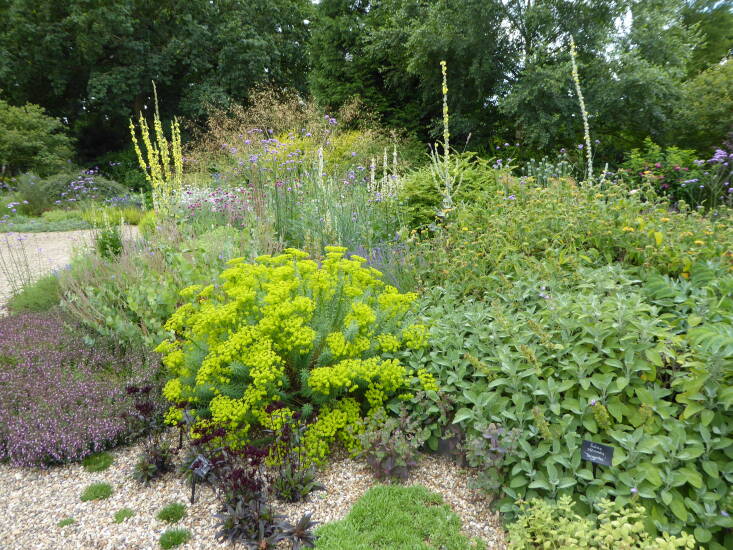You’ve planned your paths and laid your paving, but have you considered the plants that will grow around them, forming mounds or flopping artfully over the edges? Almost any path looks better lined with plants that bring in a more naturalistic feeling. They will add character and seasonal interest, and the right ones can quickly make your path feel like it’s been there for decades. With the right placement, they can even create a repetition that leads the eye through the space to what lies beyond. We’ve rounded up a few of our favorite examples.
Photographs by Clare Coulson unless otherwise noted.










See also:
- Spring Froth: Eye-Catching Umbels for the Flower Garden
- Hardscaping 101: Front Paths
- Lawn Begone: 7 Ideas for Front Garden Landscapes
- Leaves of Grass: 9 Ways to Create Curb Appeal with Perennial Grasses
Frequently asked questions
What are some soft plants that are suitable for paths?
There are several soft plants that are perfect for paths, including thyme, chamomile, Corsican mint, creeping thyme, baby's tears, and woolly thyme.
What are the benefits of using soft plants for paths?
Soft plants provide a natural and inviting feel to paths, creating a softer and more welcoming environment. They also release pleasant fragrances when stepped on, making the walking experience more enjoyable.
Can I walk on soft plants without damaging them?
Most soft plants used for paths are durable and can withstand light foot traffic. However, it's important to avoid heavy stepping or trampling to prevent damage. Regular trimming and maintenance can help keep the plants healthy and in good shape.
How do I prepare the ground for planting soft plants on paths?
Before planting, remove any existing vegetation, rocks, or debris from the path area. Loosen the soil and remove any weeds. Adding a layer of compost or organic matter can improve soil quality and plant growth. Ensure proper drainage to prevent waterlogging.
How often do I need to water soft plants on paths?
Watering requirements may vary depending on the specific plants and local climate conditions. Generally, it's best to keep the soil evenly moist, without overwatering. Regularly check the soil moisture and adjust watering accordingly to prevent drying or waterlogging.
How do I maintain soft plants on paths?
Regular maintenance is necessary to keep soft plants healthy and attractive. Prune them regularly to maintain a neat appearance and prevent overgrowth. Remove any weeds or unwanted plants that may compete for nutrients or space. Occasionally fertilizing and replenishing mulch can also promote plant growth and vitality.
Can I grow soft plants on all types of paths?
Soft plants are suitable for various types of paths, including gravel, stepping stones, and even paved paths. However, some plants may prefer specific soil conditions or require more sunlight, so it's important to choose plants that are well-suited for your specific path.
Are soft plants on paths resistant to pests and diseases?
While many soft plants used for paths have natural resilience to pests and diseases, they are not entirely immune. Regularly inspect the plants for any signs of infestation or disease. Taking preventive measures, such as proper watering and good airflow, can help minimize pest and disease issues.
Can soft plants on paths attract beneficial insects?
Yes. Soft plants, particularly those with flowers, can attract beneficial insects like bees and butterflies. These insects are important for pollination and can contribute to the overall biodiversity of your garden.
Can I mix different types of soft plants on a path?
Absolutely! Mixing different types of soft plants can create a visually appealing and diverse path. Just ensure that the selected plants have similar growth requirements and will complement each other in terms of height, color, and texture.









Have a Question or Comment About This Post?
Join the conversation